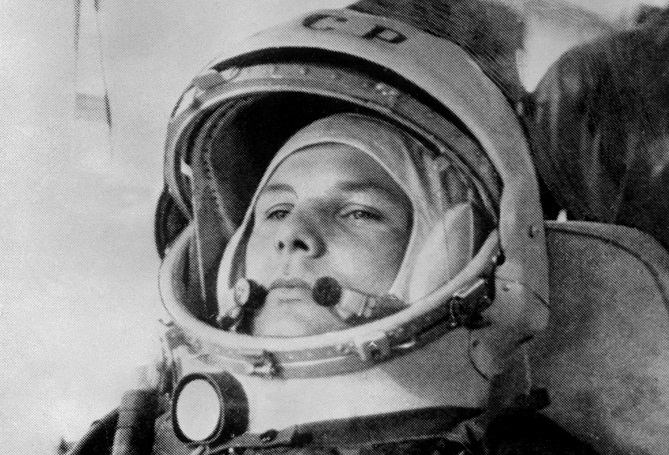Soviet cosmonaut Yuri Gagarin made pioneering spaceflight 60 years ago
| Date :13-Apr-2021 |

MOSCOW :
CRUSHED into the pilot’s seat by heavy G-forces, Soviet cosmonaut Yuri Gagarin saw flames outside his spacecraft and prepared to die. His voice broke the tense silence at ground control: “I’m burning. Goodbye, comrades.” Gagarin didn’t know that the blazing inferno he observed through a porthole was a cloud of plasma engulfing Vostok 1 during its re-entry into the Earth’s atmosphere, and he was still on track to return safely. It was his quiet composure under pressure that helped make him the first human in space 60 years ago. Gagarin’s steely self-control was a key factor behind the success of his pioneering 108-minute flight.
The April 12, 1961, mission encountered glitches and emergencies — from a capsule hatch failing to shut properly just before blastoff to parachute problems in the final moments before touchdown. From the time 20 Soviet air force pilots were selected to train for the first crewed spaceflight, Gagarin’s calm demeanor, quick learning skills and beaming smile made him an early favourite. Two days before blastoff, the 27-year-old Gagarin wrote a farewell letter to his wife, Valentina, sharing his pride in being chosen to ride in Vostok 1 but also trying to console her in the event of his death. “I fully trust the equipment, it mustn’t let me down. But if something happens, I ask you Valyusha not to become broken by grief,” he wrote, using a nickname for her. Authorities held onto the letter and eventually gave it to Gagarin’s widow seven years later after he died in an airplane crash.
She never remarried. Gagarin’s pioneering, single-orbit flight made him a hero in the Soviet Union and an international celebrity. After putting the world’s first satellite into orbit with the successful launch of Sputnik in October 1957, the Soviet space program, rushed to secure its dominance over the United States by putting a man into space. “The task was set, and people were sleeping in their offices and factory shops, like at wartime,” Fyodor Yurchikhin, a Russian cosmonaut who eventually made five spaceflights, recalled.
As the Soviet rocket and space program raced to beat the Americans, it suffered a series of launch failures throughout 1960, including a disastrous launch pad explosion in October that killed 126 people. Missile Forces chief Marshal Mitrofan Nedelin was among the victims. Like Gagarin, Soviet officials were prepared for the worst. No safety system had been installed to save the cosmonaut in case of another rocket explosion at blastoff or after.